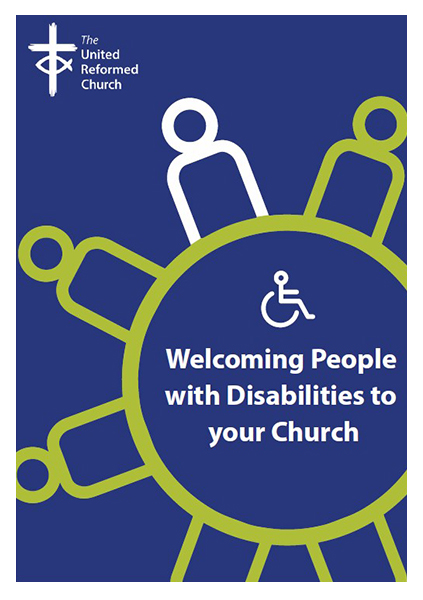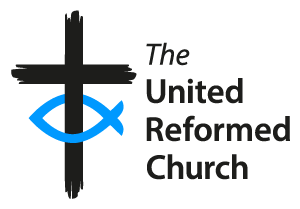Welcoming people with disabilities to your church
The United Reformed Church’s free guide to welcoming people with disabilities to your church or place of worship.
Making everyone welcome
Equalities legislation means that all churches should make provision for people with disabilities. The United Reformed Church aspires to go beyond this and ‘intends in spirit and in deed to promote equality of opportunity and diversity in all spheres of its activity’.
Disability is defined as ‘a physical or mental impairment that has a substantial and long-term adverse effect on the ability to carry out normal day-to-day activities’. ‘Long term’ means having lasted or is likely to last more than 12 months.
Anyone who has a disability, or who is associated with a disabled person, or who is mistakenly perceived as being disabled is protected by the legislation.
It is important to think broadly; do not make assumptions and consider those with less obvious disabilities. Some, but not all, mobility problems are easy to see; but consider also those who have poor strength or dexterity; have learning difficulties; have impaired vision or hearing; those with dementia; those on the autistic spectrum or those who have any illness or health condition which affects day to day living.
In addition to those who are covered by the legal definition, in order to embrace the concept of access for all, churches should consider others who may have difficulty in accessing certain facilities or services, for example: pregnant women; those particularly large or small in stature (including children); parents or others in charge of small children; those suffering mental ill-health; and those with injuries.

A church’s duty in respect of people with disabilites
A church’s primary purpose is for worship. This is a service which it provides for all people. Most churches have wider activities, whether organised by themselves or by other organisations, eg activities for groups (perhaps in a church hall), concerts, education, etc. All are covered by the requirements of accessibility.
The requirement of the Equality Act is to make ‘reasonable’ adjustments and, for example, providing disabled access via a rear entrance would meet the requirements of the Act. However, churches should aspire to full equality where everyone enters by the front door both physically and metaphorically.
What are our responsibilities?
The Equality Act sets out three core responsibilities or requirements in relation to those with disabilities:
1. Where the way that things are done puts a person with disabilities at a substantial disadvantage to people who are not disabled, then reasonable steps should be taken to avoid the disadvantage. In other words, this is about how things are done or how information is supplied. This might include such things as large print hymn books and notice sheets, people available to help someone from a car or into or around a building, and so on.
2. Where a physical feature puts a disabled person at a substantial disadvantage compared to people who are not disabled, then reasonable steps must be taken to remove, alter or ensure users can avoid it. This might include such things as providing a ramp to allow wheelchair users to gain access to premises otherwise reached by steps, widening an entrance or providing a handrail.
3. For employees, where a disabled person would be put at a substantial disadvantage compared to someone who is not disabled without the provision of an auxiliary aid, then reasonable steps must be taken to provide that aid. This might include special software to allow use of a computer by a visually impaired administrator.
Reasonable adjustments and cost
One of the key factors as to whether it is reasonable to make a particular adjustment will be the cost of so doing in relation to the resources of the church. However, lack of funds is not an excuse not to think about what can be achieved and to investigate options. It may be possible to phase in changes on a particular timescale to meet financial and other objectives. If this is the case, it is important to set a realistic and justifiable timescale rather than putting things off indefinitely.
Some measures are relatively simple to implement and give immediate benefit. For instance, providing (and maintaining) colour contrast to assist the visually impaired (e.g. highlighting changes in level and the nosings on steps, etc.), rearranging furniture such as chairs, making sure routes are well signed and clear of obstacles, providing handrails etc. Simple things like clear signs around your building, easy to use door handles, large print copies of magazines and service sheets can be implemented at little cost with some thought and modest effort.
Reviewing your church’s facilities and accessibility
It is good practice to review periodically the access and facilities your church provides for ALL but particularly those with disabilities. (Needs, facilities, resources and ways of doing things change over time.)
Whenever you are planning and carrying out building or refurbishment works, such as extending premises or making structural alterations, you should consider whether this provides an opportunity to remove or alter any physical features which create access problems.
Consider both the inside and outside of the church building including approaches to and from the building, movement around the building and all of the services inside the building as well as exit routes and means of escape in case of an emergency.
For some buildings this may seem to present a considerable challenge, especially if your building is of historic interest but every church should have a prioritised, planned method of achieving the appropriate level of facilities in thelonger term. This may be achieved by an access appraisal or audit and through consultation with disabled users, the Local Authority’s Access Officer or assistance from bodies or resources listed in the appendix.
It is important to think through what is provided for disabled visitors. Take a look at the Church of England’s guidance for Welcoming Disabled Visitors.
It is good practice to produce an Access Statement which gives information on the suitability of buildings for people with a wide range of disabilities. Such a statement can be published and displayed by the church and handed out with acknowledgments of church bookings or lets by outside organisations and wedding or baptism bookings, etc. so that people know what to expect when they arrive at church. In this way people know what the situation and provision is in advance and should not have unwelcome surprises.
Access appraisal/audit
Anticipate that people with disabilities will want to use your buildings and plan the necessary adaptations and facilities. Think about how your building and activities can accommodate the widest range of disabilities:
- Service provision: What services do we provide and how and where do we provide them?
- Accessibility: What are the barriers to participation?
- Impact: How does the building (along with its fittings and furnishings) impact accessibility?
- Experience: What do existing users with disabilities say would improve their ability to participate?
The following provide useful guidance:
- Widening the Eye of the Needle: Access to Church Buildings for People with Disabilities John Penton: available from several online book sellers
- A place to belong – A guide to access, inclusion and welcome in our churches (PDF), especially in relation to people with disabilities, mental health challenges, or on the autism spectrum
- A place to belong – Template for an Access Appraisal
- Helpful documents and leaflets on approaches to considering access for disabled people and on audits and training from Through the Roof
Who carries out access appraisals?
It is not necessary to have a particular qualification to carry out an access appraisal or audit. It needs someone who is able to understand a wide range of disabilities and take a pragmatic view as to how buildings and facilities might be preventing full participation.
Access plan
Use the output of your Access Appraisal to create a list of priorities. This is the start of your Access Plan.
What happens when we need to make physical changes to our buildings?
Consult your synod for support and advice. The normal Synod procedures relating to building alterations still apply.
When it comes to making structural changes to a building, you must have support from a suitably qualified professional eg a building surveyor or architect. It is important that anyone advising on building alterations has relevant and up‐to‐date knowledge of construction and is familiar with the appropriate building regulations as well as disability issues.
What if the church is a listed building?
You must comply with planning and listed building consent or the URC’s Ecclesiastical Exemption procedure.
Equalities Committee May 2021
Useful contacts
Information about disabilities and how to support people is widely available from several bodies including those charities which support people with particular disabilities.
Contact information for some of them is shown below:
- Alzheimer’s Society
- Centre for Accessible Environments
- Churches for All
- Dementia UK
- Disability Wales – Good Practice Guidance Toolkit
- Disability Rights UK
- Diverse Cymru
- Down’s Syndrome Association
- ENABLE Group (for Scotland)
- English Heritage’s booklet, ‘Easy Access to Historic Buildings’ (PDF)
- Equality and Human Rights Commission
- Historic England’s booklet, ‘Easy Access to Historic Buildings’
- Historic Environment Scotland ‘Access to the Built Heritage’
- Learning Disability Wales
- Mencap
- MIND
- National Autistic Society – Autism Friendly Award
- RNIB
- The Royal National Institute for Deaf People
- UK Government – disability rights
Download this guidance
- Welcoming people with disabilities to your church (PDF | 234kb)
